#faith of the seven
Text
People saw Visenya and maegor fight against the faith of the seven and assumed that the faith doesn’t exists within house Targaryen and that alicent having the faith as her religion is fucking horrible.
Alysanne literally sent her daughter Maegelle to become a septa as a thanks to the mother for giving her many children. her son Vaegon became an archmaester and studied at old town.
Aegon the conqueror was literally crowned by the high septon and so was Jahaerys I. Princess Daella didn’t marry Royce blackwood because he believed in the old gods instead of the faith of the seven.
So the faith of the seven isn’t just something alicent brought into the house Targaryen to go against them. By her time, most of them were already part of the faith and believed in it.
Also having her faith is not a bad thing! Just because she decorated the castle with the faith symbols doesn’t mean she was changing everything! The Targaryens symbols were still everywhere, which are dragons.
The dragons are the symbol of house Targaryen and the faith of the seven is everything to house Hightower. And Alicent is the current queen and a Hightower who has Targaryen children. So it’s not wrong to combine both symbols of the families.
#fire and blood#house of the dragon#house targaryen#aegon ii targaryen#rhaenyra targaryen#helaena targaryen#aemond targaryen#daeron targaryen#daemon targeryan#house hightower#otto hightower#faith of the seven#old town#hotd#team black#team green
536 notes
·
View notes
Text
so emily carey came on the official house of the dragon podcast and confirmed that she, miguel, and ryan all agreed that alicent gets her faith from her mother, that her mother was always the religious one, and that this faith is "something alicent carries because of this connection with her mother" and that's why we get the scenes depicting alicent's relationship with the faith. to remind us that this is a little girl who lost her mother and is spending the rest of her life having to deal with the empty space her mother left behind.
alicent brings rhaenyra to the sept to help with her grief from her mother because the sept is where alicent goes to remember her own mother:

alicent wears icons of the faith on her clothing:
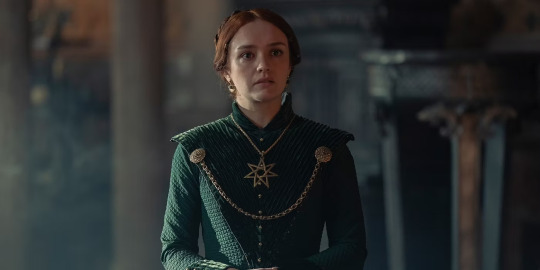
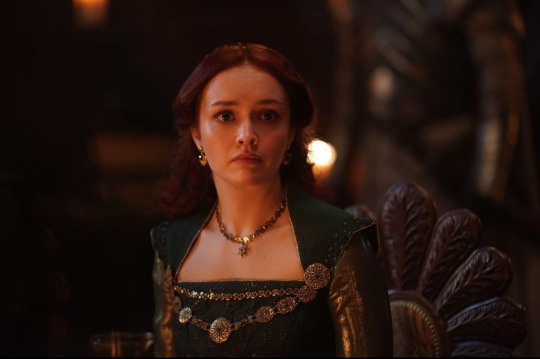
and she brings those icons into her home in the red keep:

and she does all these things because she's bringing her mother's memory with her. because she is a scared girl navigating the misery of a forced marriage with no friends and no family aside from her manipulative father and she is trying to grasp for this maternal protection and compassion that is nowhere to be found.
1K notes
·
View notes
Text

Alicent finds solace in religion from an early age because:
she had a difficult childhood/upbringing
the death of her mother was traumatizing (and religion was probably important for her mother too)
she felt like a foreigner at King's Landing and this was a way for her to embrace her heritage and reconnect with her roots
she felt pride in the faith of the seven hailing from Oldtown the same way the Targaryens feel pride in the "blood of the dragon"
she yearned to be heard/understood by a higher power
she was looking for help and guidance in her life to deal with anxiety and her domineering father
she is haunted by the fatal flaw of self-loathing, as is evident from her skin-picking disorder
she uses religion as a way to escape reality: "you desire not to be free, but to make a window in the wall of your prison"
What a complex and compelling character for real <3
#no because Rhaenys was 100% right#alicent hightower#house of the dragon#hotd#alicent#the green queen#team greens#hotd thoughts#hotd themes#hotd meta#hotd analysis#pro alicent hightower#the greens#pro team green#asoiaf#a song of ice and fire#faith of the seven#team green#alicent thoughts#olivia cooke#emily carey#lady alicent#team alicent#greenqueenrants#greenqueenhightower
356 notes
·
View notes
Text
Targ stans who go on and on about "The blood of Old Valyria" and "filthy Andal blood and traditions" always manage to baffle me when they start talking about religion in Westeros.
Like, High Valyrians with their Valyrian Gods partaked in human sacrifice, human experiments, unimaginable types of torture, slavery, eugenics, all types of familial incest and were basically fantasy nazis in their society built upon the enslavement and forced hard labor of the races they saw as "lesser" but clearly, the evilest religion is the one where people pray to the humanoid aspects of their God and read their bejeweled little book.
#asoiaf#a song of ice and fire#targ stans#at it again#anti targaryen stans#anti targ stans#cut the “blood of old valyria” bs babes#hotd#house of the dragon#old valyria#fuck old valyria#faith of the seven#religion in asoiaf
222 notes
·
View notes
Text


She knelt before the Mother. “My lady, look down on this battle with a mother’s eyes. They are all sons, every one. Spare them if you can, and spare my own sons as well. Watch over Robb and Bran and Rickon. Would that I were with them.”
Catelyn IV, ACOK
#catelyn stark#catelyn tully#asoiaf quotes#a clash of kings#asoiaf#a song of ice and fire#house stark#house tully#faith of the seven#robb stark#bran stark#rickon stark#cat stark
316 notes
·
View notes
Text

Naerys Targaryen, Queen consort of Aegon IV Targaryen, during her wedding day.
I added this to my print shop!
#naerys targaryen#queen naerys#portrait#house targaryen#asoiaf#asoiaf fanart#a song of ice and fire#fire and blood#procreate#fanart#digital painting#got#game of thrones#hotd#house of the dragon#faith of the seven#bride#queen#targaryen queens
152 notes
·
View notes
Text
thinking about how young alicent went to the sept a lot and how aegon hides in a sept in episode nine and his “i want my mother” when they found him. no one can convince me that she wouldn’t bring him with her when he was too small to really go anywhere without her and she wanted to get away from everything
#alicent hightower#aegon ii targaryen#aegon targaryen#house of the dragon#hotd#house of the dragon alicent#faith of the seven#alicent and aegon
263 notes
·
View notes
Text
that one team green stan who brought up colonization in our argument then blocked me, kept claiming she was team “small folk” but exclusively only wrote essay length posts about her hatred for Rhaenyra and other Targaryens but never about how the Hightowers/other noble families of Old Town and the militant Faith of the Seven lead a religious based war with the intention of colonizing and converting the entire content of Westeros to the faith causing many small folk to lose their lives, some (Northerners) who still face suppression and ridicule for worshiping the Old Gods all the way up to AGOT’s era. all this hundreds of years before the Targaryens even stepped foot in Westeros. and kept ignoring how Aemond burned the Riverlands with the small folk still there. you can’t both be “team small folk” AND “team representation of the oppressive catholic church” lol the layers of hypocrisy never ceases to amaze me.
#but apparently *i* never read the books 🤣#anyway#GRRM wrote 10000 years of history and lore for a REASON#mainly for Dany#but also for little hints like these!#he also is a historian#and was literally inspired by the catholics when making the faith of 7#anti alicent stans#anti green stans#anti team green#anti greens#anti alicent hightower#pro rhaenyra targaryen#pro rhaenyra#pro team black#princess rhaenyra targaryen#rheanyra targaryen#hotd rhaenyra#rhaenyra targeryan#rhaenyra targaryen#queen rhaenyra#house targaryen#house hightower#faith of the seven#old town#otto hightower#hotd jacaerys#daemon targaryen#aemond targaryen
67 notes
·
View notes
Note
What do you think of Grrm's portrayal of religion?
Hi anon, this is a really interesting question, and it took me awhile to put together what I hope is a coherent answer.
For context, I think GRRM's background is important to keep in mind. George is almost exactly my parents' age and belongs to the same demographic of American anti-war ex hippies who aged into broadly liberal baby-boomers. Their radicalism has largely mellowed over the years, they may not be the most up to date on the appropriate terminology, and they tend to prioritize nonviolent solutions to systemic problems (my mom often tells me the younger generation needs to do another March on Washington). One thing liberal boomers also tend have in common is that often they grew up religious but, as they entered their 20s and went to college, broke away from the churches of their childhood. My family is full of ex-Catholic liberal boomers like George. They might have dabbled in Buddhism or Hinduism in the 70s, New Age mysticism in the 80s or 90s, and ended up settling into statements like, "I'm spiritual, but not religious." Almost invariably, they have a sort of disdain for organized religion, which they associate with a kind of yokel mentality, a place for anti-Choice anti-LGBTQ traditionalists. Although they will profess "to each his own," to the average liberal boomer, the church represents regressive values and they cannot imagine why anyone would willingly return to it. Even those who did remain religious take great pains to make it known they are not like those Christians. And to be fair, liberal boomers have a good reason to feel this way. The churches of their childhoods were not fun places for people whose own ideas and values went against post-WW2 broadly white middle class values. Unsurprisingly, SFF authors tend to fit into this category.
And this sort of bleeds into a lot of 90s SFF. You see a lot of worlds that have religion, but rarely do you have characters that are religious, and even more rarely do you have sympathetic young protagonists who are religious. You might have the occasional kindly priest or nun type, but far more often these characters will be abusive, mean spirited, or narrow minded (think of Brienne's childhood septas). Religion is often treated with the same disdain by in-world characters as it is by the authors themselves. You might even have worlds that are almost entirely secular, with vague references to "The Gods," but without any real religious traditions constructed around them (Robin Hobb's Realm of the Elderlings series, which features two vague dieties, Eda and El, who seem to have no religious traditions surrounding them whatsoever). You might have cultish religions that are actively dangerous and must be stopped, or you might have Catholic church analogues, existing in opposition to everything cool and fun. Protagonists tend to be cynical non-believer types, or they might start off as true believers and lose their religion along the way. Rarely are they allowed to have sincere and abiding faith.
And you can see a lot of this in George's writing, in the way he portrays the Faith of the Seven and other religions, and the way the fandom receives them. The Faith of the Seven is Westeros' answer to the Catholic church, but there are also the Old Gods, the faith of R'hllor, and others, often presented in opposition to each other. George himself sees religion as a divisive force, and in ASOIAF, we see religions in conflict with each other, we see them weaponized to fuel vendettas, we see them used to drive prophesies and start wars. There's a clip somewhere, of George at a panel, where he's talking about religious conflict and his take is very reminiscent of George Carlin's-- you can tell he knows the bit. "Are you really going to kill all of these people because a giant invisible guy in the sky told you too? And your giant guy in the sky is different?" George asks, receiving a round of applause from the crowd. It's a very modern view on religion, which is fair, I think. He's writing for a modern audience who have modern conceptions of the church, and he is making a deliberate point about the harm religion can do. .
What I do think is missing, or at least downplayed, are the ways in which the medieval church was really a driving cultural and social force in medieval Europe. We live in a secular society, so we have the luxury of disregarding the church in a way that medieval people did not. This is one major way in which the worldbuilding of ASOIAF departs from the real world middle ages. To portray the medieval church as a primarily regressive institution that mostly drove conflict is too simplistic. The Catholic church is what culturally unified most of western Europe into what was known as "Christendom." The clergy served political functions, such as providing an important check upon the power of medieval kings, and when the power of the church declined, despotism grew. Socially, for most western Europeans, the church was also the center of day to day life. Insofar as medieval peasants had any opportunities for leisure time and celebrations, most of these revolved around the church. The church was for centuries a driving force behind art, music, literature, and architecture, and it also performed important social functions, such as operating poorhouses and leper-houses, and providing educations for children.
And all of this was just extremely normal. Most people prayed multiple times each day, and sincerely believed in heaven a hell. The state of one's soul after death was such a real concern that the sale of indulgences-- a way that you could pay to get your dead loved ones whose souls were in purgatory into heaven more quickly-- became a major racket for the Church. I've seen the HotD fandom react to Alicent Hightower's level of devotion calling her a religious "fanatic" and I cannot stress enough how absolutely normal Alicent would have been in medieval times. This is where I blame the framing of the show more than George, because it does set Alicent's faith in opposition to Rhaenyra's seemingly more modern values, but does it in a selective way. For instance, Alicent comes off as prudish, and modern audiences hate a prude, but we never see how her faith would have certainly inspired her, as queen, to take other more progressive actions such as giving alms to the poor or bestowing her patronage upon motherhouses. In another post about the fandom perception of Valyrian culture, I talked about how this modern view of devout belief, particularly Catholicism, tends to cast anything that is presented in opposition to it as an unequivocal good, and I see this sort of rhetoric slung around the fandom a lot, "why would you defend the pseudo-Catholics who hate women??" But the pseudo-Catholics are really just normal medieval people, and they didn't hate women, they simply lived in a patriarchal society and the material conditions did not yet exist which would allow them to challenge that in any meaningful way.
97 notes
·
View notes
Text
Alicent and Criston sharing their faith, practicing their religion together is so intimate. And the subtext of, "I tried to share this with Rhaenyra, but she wasn't really interested, and now I'm sharing it with you, and you are," is so loaded.
157 notes
·
View notes
Text

A Feast for Crows, Appendix

A Storm of Swords, Samwell III

A Game of Thrones, Sansa I

A Storm of Swords, Arya IX

A Feast for Crows, Jaime IV

A Game of Thrones, Tyrion I

A Storm of Swords, Jaime VII

A Feast for Crows, Brienne VI

A Feast for Crows, Cersei IV

A Feast for Crows, Sansa I

A Feast for Crows, Brienne VI

A Feast for Crows, Brienne VI
Sandor Clegane + The Stranger imagery
105 notes
·
View notes
Text
The Maiden and The Stranger


Also I kinda imagine The Stranger's face blurs when she moves
The inspo:

#hotd#game of thrones#got#got oc#got ocs#hotd oc#game of thrones oc#got fanfiction#got fandom#a song of ice and fire#faith of the seven#asoiaf the stranger#asoiaf the Maiden#asoiaf the seven#asoiaf fic#asoiaf fanfic#asoiaf art#asoiaf fanart#asoiaf fandom#asoif/got#asoif fanart#asoif fanfic#asoiaf#my art
58 notes
·
View notes
Text
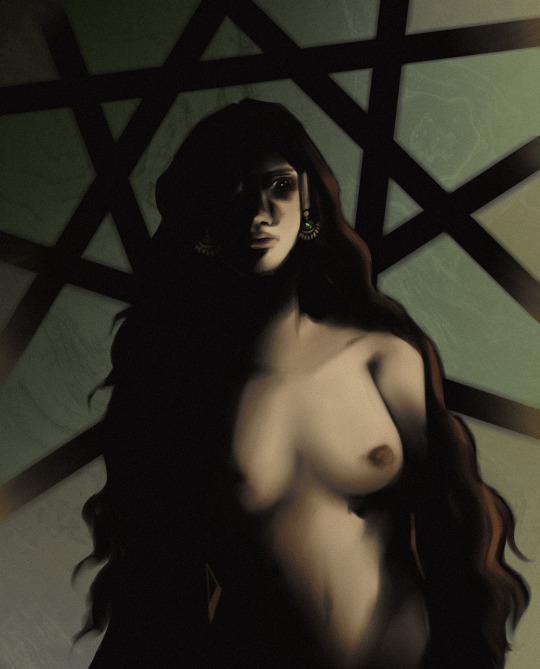
gentle mother, font of mercy
#posted a version of this with her dressed properly on twitter but i like this one better#more artsy#digital painting#moart#queen alicent#alicent hightower#hotd alicent#hotd#hotd fanart#house of the dragon#house of the dragon alicent#house hightower#faith of the seven#nsft#artistic nudity
70 notes
·
View notes
Text
So, I saw a post some time ago that was talking about how the Andals and their religion (Faith of the Seven) is more equalitarian than Old Valyria.
I don't remember exactly what their points were.
First of all, we don't know anything about Old Valyria other than that it was advanced and had dragons and practiced slavery. We know a lot about the Andals, even if their information is different depending on who is telling it.
What we know
What we do know of Old Valyria is that women were important enough for Daenys's warnings to be heeded by her father.
We know that women had enough freedom to go in a three year expedition trip with their dragon in a whole other continent.
We do know that they had female goddesses.
We do know that women were dragonriders just like the men.
We do know that men often had to marry their sisters to inherit.
We know that they ruled together.
What we can deduce
We can deduce that women were allowed to be scholars — Daenys wrote a book about her prophecies.
We can deduce that women could be warriors — Visenya was renowned for her swordsmanship and had a sword of her own that may have been made for her. There is no record of Aegon or any valyrian man finding this weird.
We can deduce that a brother needed to marry their sister to accede to inherit — We know Daenys married her brother Gaemon and their children too married and were said to rule together. Aegon had to marry Visenya for duty. Aegon "the uncrowned" had to marry his eldest sister Rhaena.
We can deduce that they had similar rights — Again, they ruled together. There was no difference between Aegon, Rhaenys and Visenya other than he was the one crowned. The three conquerors had pretty much the same power.
Why did Aegon wore the crown instead of Visenya?
Visenya was the one to crown Aegon, this is important to note. We don't know how long exactly they were planning the conquest, but this may have been something they talked about. They were going to rule over a kingdom of deeply misogynistic people, they may have agreed to give Aegon the crown and introduce more progressive ideas later.
My thinking is that after being crowned and being called king, it got to Aegon's head. He stopped heading Visenya's advice and started treating her worse. He started to accept the Andals ideals because it gave him more power, even marrying his thirteen year old son to a twenty three year old woman only because the Andals were scandalised with the union of Rhaena and Maegor.
The union of Rhaena and Maegor would have made it difficult for Aegon "the uncrowned" to acced the throne (or a future son) as Aegon I and the Andals probably wanted.
This is not exactly new, men jumping at the opportunity to have more power and betraying their female companions. This has happened many times in our own history and it happened later with Jaehaerys.
Other Theories
The Dragonbinder has an inscription that says: "I am Dragonbinder ... No mortal man shall sound me and live ... Blood for fire, fire for blood."
No mortal man. This can easily be a "Lord of the Rings" situation and if it is it means women had much more power in Old Valyria than the Andal or First Men women.
Aenys and Maegor may not be Aegon's, this could mean that the valyrians didn't mind bloodlines continuing by women's children (the lords of Westeros voted against this in the Great Council of 101) which is already a huge improvement of what the Andals do even in the face of their own laws.
Conclusion
Valyrians did have better regard for women that the Andals or the First Men.
I don't trust the Andals, they lie a lot about their own history and are religious zealots.
#old valyria#valyrianscrolls#house targaryen#faith of the seven#a song of ice and fire#asoiaf#asoiaf meta#aegon the conqueror#aegon i targaryen#visenya targaryen#visenya the conqueror#rhaenys the conqueror#rhaenys targaryen#anti house hightower
54 notes
·
View notes
Text
The faith of the Seven-
The Father : Otto Hightower.
The Mother : Alicent Hightower.
The Warrior : Ser Criston Cole.
The Crone : Helaena Targaryen.
The Maiden : Daeron Targaryen.
The Smith : Aegon ii Targaryen.
The Stranger : Aemond Targaryen.
#faith of the seven#alicent hightower#otto hightower#ser criston cole#aegon ii targaryen#aemond targaryen#helaena targaryen#daeron targaryen#daeron the daring#house of the dragon#hotd#team green#grrm#green kids#welighttheway#house hightower
147 notes
·
View notes
Text



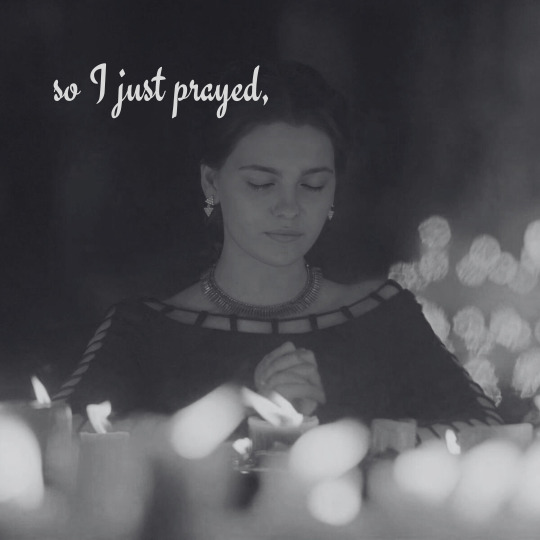

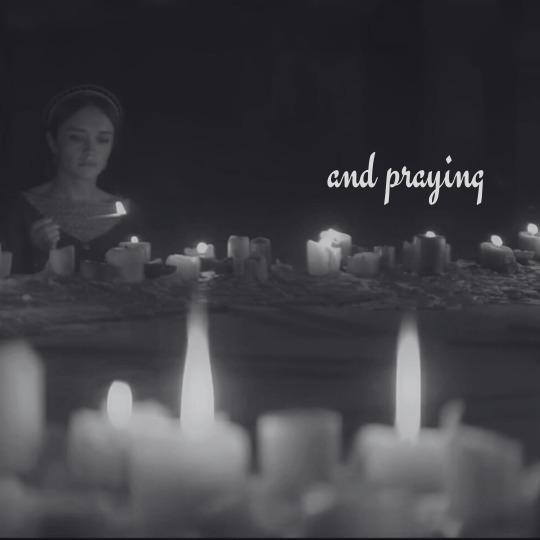

𝚂𝚞𝚗 𝙱𝚕𝚎𝚊𝚌𝚑𝚎𝚍 𝙵𝚕𝚒𝚎𝚜 || 𝙴𝚝𝚑𝚎𝚕 𝙲𝚊𝚒𝚗 || 𝙰𝚕𝚒𝚌𝚎𝚗𝚝 + 𝙵𝚊𝚒𝚝𝚑 𝚘𝚏 𝚝𝚑𝚎 𝚂𝚎𝚟𝚎𝚗
#devotion queen#catholic guilt#alicent hightower#hotd#house of the dragon#alicent#asoiaf#the green queen#welighttheway#hotd meta#hotd art#team greens#hotd parallels#sun bleached flies#ethel cain#faith of the seven#green queen#queen alicent#greenqueenhightower#greenqueenedit#hotd edit#a song of ice and fire#hotd season 2#hotd s2#olivia cooke
45 notes
·
View notes